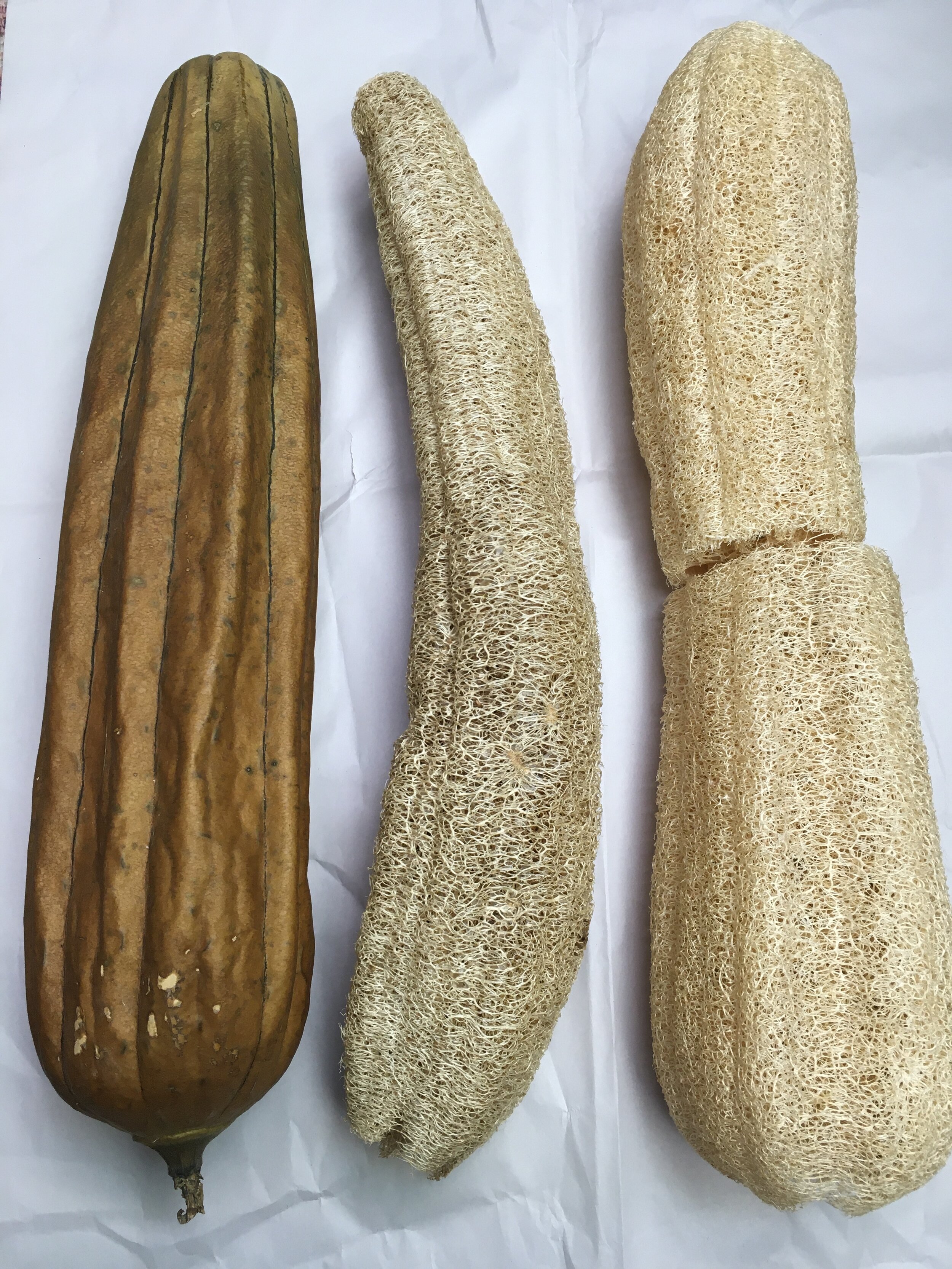Grow your own Luffa Sponges
Are you looking for a fun summer gardening project this year? Why not try your hand at growing your own luffa sponges. Well, technically, you’re not growing the actual sponge. But you ARE growing a gourd which you can harvest and turn into a luffa sponge.
Luffa on the vine
Luffas (luffa aegyptiaca) are members of the cucurbit family, so if you’ve grown cucumbers or squash in the past, you can grow luffas! How do you get started? Well, these dudes really like to grow, sending out vines of 20 feet or more, so they are best grown on a strong trellis or fence. Pick a spot in full sun. Luffas require a long growing season of at least 120 days, so I direct seed mine in mid-May once the soil has warmed a bit, planting the seeds about a foot apart. Some folks start their seeds indoors but I haven’t found that to be necessary. Leave the luffas on the vine until they fully ripen. In late summer, begin removing blossoms to direct the plant’s energy to the luffas growing on the vine. When ripening, they will develop brown spots. Not to worry! This is just part of the ripening process. Once the luffas are brown and have hard shells, they can be harvested.
A word of caution. You need to harvest your luffas before first frost, even if they haven’t fully ripened, as they’ll rot otherwise. You can then let them finish ripening indoors provided they’re hung in a well-ventilated spot.
Once harvested, soak your luffas in warm water for 15 – 20 minutes until their shells become leathery, at which point the “skin” can be removed revealing the sponge inside. Remove as many of the seeds as possible (they look like large watermelon seeds). You’ll find the sponge at this point will not be the creamy white kind you see in stores. To get that, you’ll need to soak your sponges in a mild 10% or so bleach solution for one hour, then rinse several times with fresh water. At this point I like to cut my luffas to whatever length I want with a big pair of scissors, or you can wait until the sponge dries, at which point you can cut them with a serrated knife or saw blade.
A ripened gourd, after removing the shell, and after soaking in a mild bleach solution
I’ve been growing luffas for several years now and the sponges make great gifts. You’ll find they are easy to grow. I haven’t found them to be picky when it comes to soil. They can develop powdery mildew and various leaf spot diseases late in the season, but it doesn’t seem to affect overall production. Where to get the seeds? Many seed catalogs carry them. SPECIAL OFFER TO MCMGA MEMBERS: Provide me with your mailing address (if not listed in last year’s Folia and Flora) and I will send you a FREE packet of luffa gourd seeds. This is an open pollinated variety, so you can then keep seeds year after year.
Contact me at edwkitchen@gmail.com. HAPPY GROWING!
submitted by
Ed Kitchen



